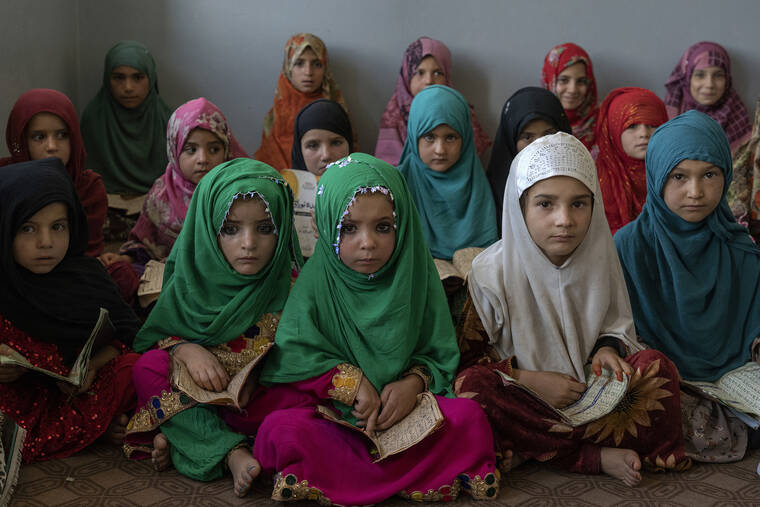Afghan girls face uncertain future after 1 year of no school
KABUL, Afghanistan — For most teenage girls in Afghanistan, it’s been a year since they set foot in a classroom. With no sign the ruling Taliban will allow them back to school, some are trying to find ways to keep education from stalling for a generation of young women.
At a house in Kabul, dozens gathered on a recent day for classes in an informal school set up by Sodaba Nazhand. She and her sister teach English, science and math to girls who should be in secondary school.
ADVERTISING
“When the Taliban wanted to take away the rights of education and the rights of work from women, I wanted to stand against their decision by teaching these girls,” Nazhand told The Associated Press. Hers is one of a number of underground schools in operation since the Taliban took over the country a year ago and banned girls from continuing their education past the sixth grade.
While the Taliban have permitted women to continue attending universities, this exception will become irrelevant when there are no more girls graduating from high schools.
“There is no way to fill this gap, and this situation is very sad and concerning,” Nazhand said.
The relief agency Save the Children interviewed nearly 1,700 boys and girls between the ages of 9 and 17 in seven provinces to assess the impact of the education restrictions. The survey, conducted in May and June and released Wednesday, found that more than 45% of girls are not going to school, compared with 20% of boys. It also found that 26% of girls are showing signs of depression, compared with 16% of boys.
Nearly the entire population of Afghanistan was thrown into poverty and millions were left unable to feed their families when the world cut off financing in response to the Taliban takeover.
Teachers, parents and experts all warn that the country’s multiple crises, including the devastating collapse of the economy, are proving especially damaging to girls.
The Taliban have restricted women’s work, encouraged them to stay at home and issued dress codes requiring them to cover their faces, except for their eyes, though the codes are not always enforced.
The international community is demanding that the Taliban open schools for all girls, and the U.S. and EU have created plans to pay salaries directly to Afghanistan’s teachers, keeping the sector going without putting the funds through the Taliban.


